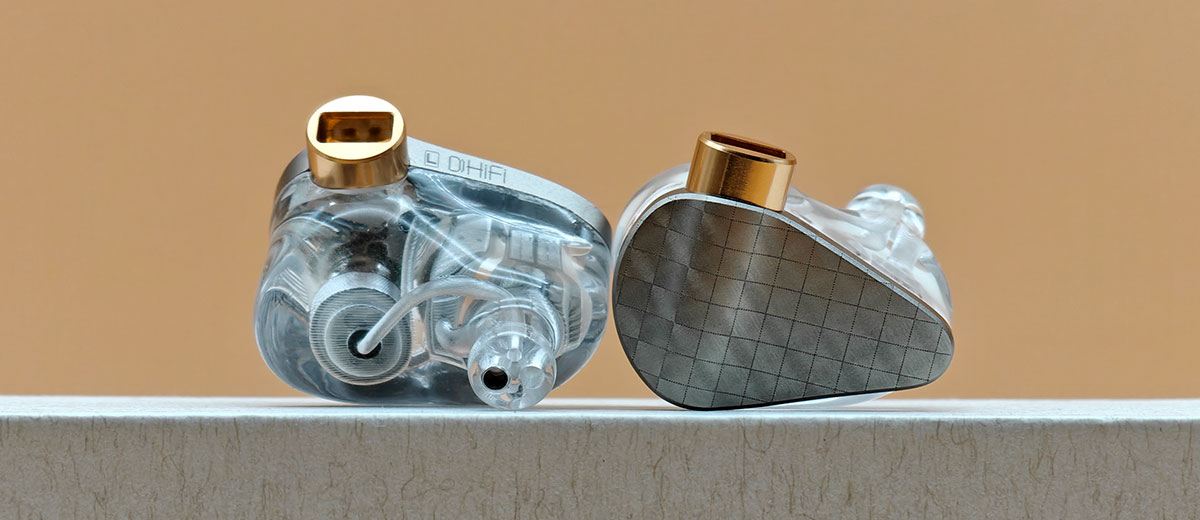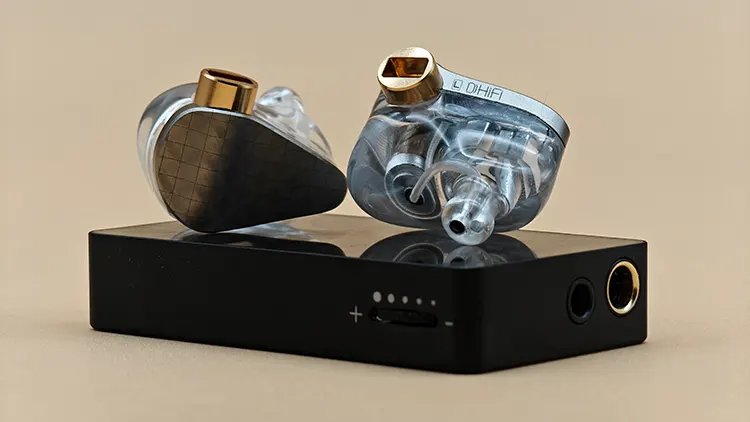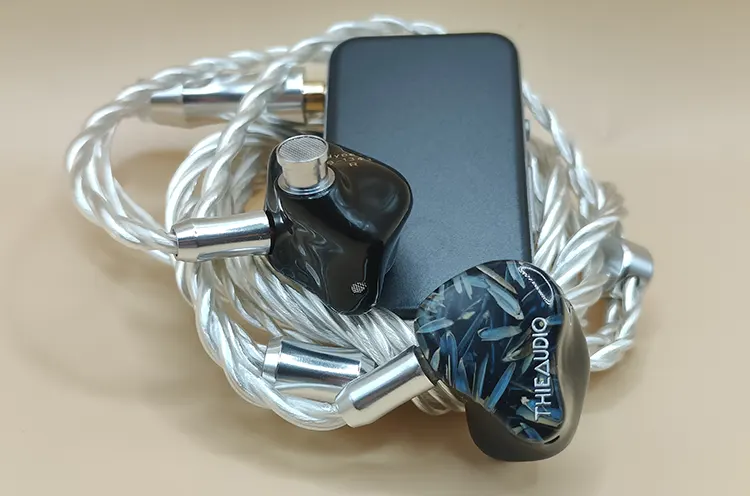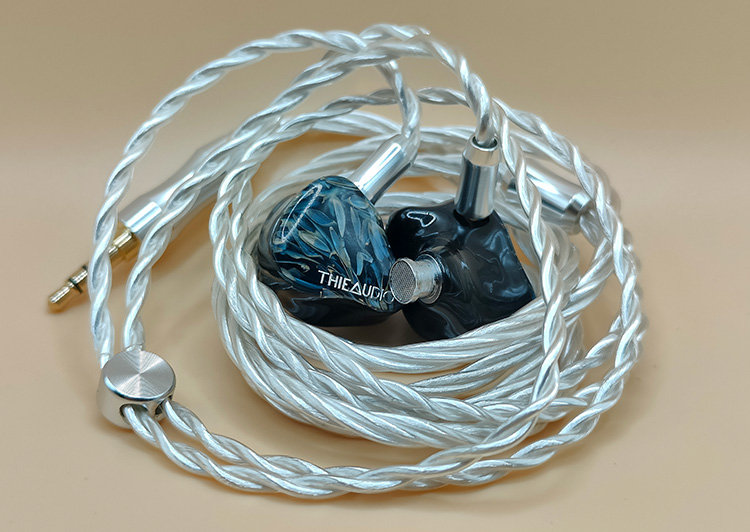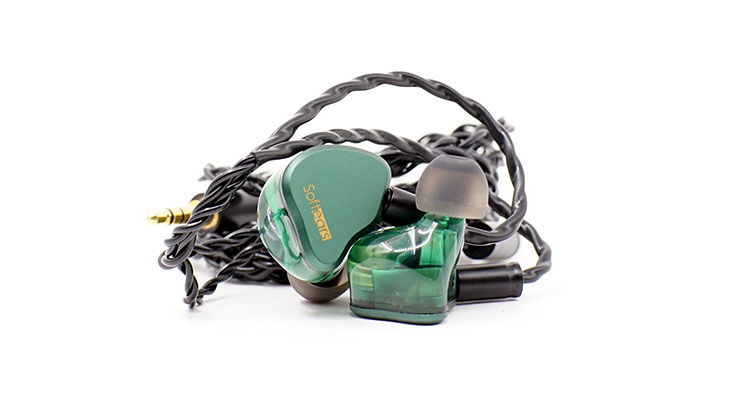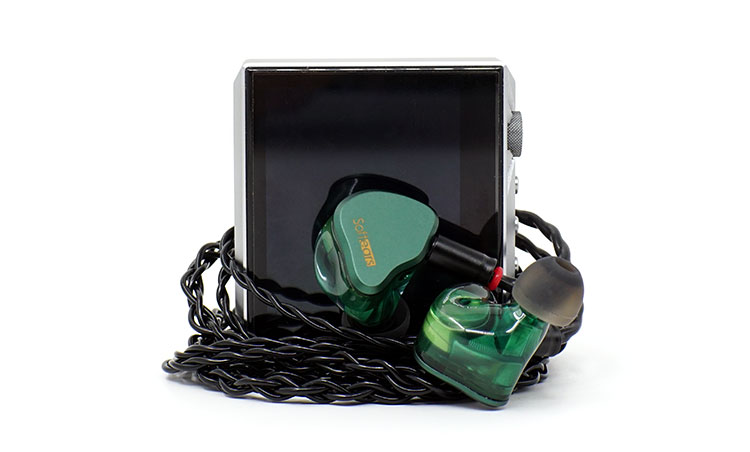Synergy
Efficiency
The Surface has an impedance of 15Ω and a sensitivity of 118 dB/Vrms, making it very easy to drive. Even from weaker sources, it reaches loud volumes without needing extra gain or power.
It comes with a 4.4mm balanced cable by default, which adds further headroom and stability when paired with balanced outputs. For most setups, no extra amplification is required.
It’s balanced tuning holds up well across different volume levels. The only noticeable change is the bass becoming slightly softer at low volumes, but the rest of the sound remains consistent.
Vocals stay natural and resolving regardless of listening level. There’s no loss of clarity or drop in treble presence when the volume is lowered.
Pairings
Using the Surface with a phone keeps the sound clean and uncolored. It drives the IEM just fine, though the bass comes off a little softer compared to other sources.
With the FiiO JA11, there’s a slight lift in the upper mids that gives vocals more energy. It never turns shouty, but the presentation leans a touch brighter than neutral.
Pairing it with the Colorfly CDA-M2 improves the overall layering and separation. Treble becomes clearer, and instruments have more room to breathe without changing the tuning.
The Heartfield R1 brings in added warmth and body to the midrange. Vocals become fuller and more intimate, giving the Surface a more relaxed and musical presentation.
Select Comparisons
THIEAUDIO Hype 2
Technical
The THIEAUDIO Hype 2 uses a dual dynamic and dual balanced armature setup under their new HYPE series configuration.
It introduces their Impact² system, a dual dynamic isobaric design aiming for a stronger bass texture and improved depth while keeping the tonal balance intact.
For the balanced armatures, THIEAUDIO uses Sonion’s P2356HF/4 and E25ST001/D units. The former handles resolution and clarity, while the latter acts as a super tweeter that extends the upper treble and mimics the behavior of an EST.
Design
The faceplate of the THIEAUDIO Hype 2 comes in multiple color variants, each featuring a vibrant pattern set against a black base. Its design feels chaotic at first glance, but remains visually balanced without ever looking messy or overwhelming.
The rest of the shell is a solid black resin with side orientation markings and manufacturing labels printed directly on the body. The nozzle is short and wide, compatible with most tips, and has a small mesh-covered vent near its base that doesn’t appear to be user-replaceable.
Performance
Both IEMs approach bass with control, keeping the low-end clean and free of bloat. The Hype 2 pulls slightly ahead with a stronger sub-bass presence, offering quicker impact and a deeper rumble that adds more physicality to the low end.
Midbass follows the same pattern, where the Hype 2 gives a bit more weight and punch. It sounds more engaging with drums and basslines, while the Surface remains tighter and more refined in its delivery.
The Surface takes the lead in the midrange, offering a smoother and more balanced vocal presentation. Male and female vocals sit evenly in the mix, unlike the Hype 2, which pushes female vocals forward while leaving male vocals slightly recessed.
Vocal texture and emotion are better conveyed on the Surface, capturing small nuances that the Hype 2 tends to gloss over. It brings more depth to vocals without sounding pushed or artificial.
Treble is also handled better by the Surface, with improved extension and detail retrieval. It adds a touch of sparkle and air that the Hype 2 doesn’t fully reach, though both avoid sibilance and harshness.
Soundstage is more expansive on the Surface, stretching wider and offering more depth. The Hype 2 feels more intimate by comparison, though both perform well in imaging and maintain solid separation across busy tracks.
Softears Volume
Technical
The Softears Volume uses a hybrid configuration with one dynamic driver and two balanced armatures arranged in a three-way crossover.
Its 10mm dynamic driver features a Beryllium-plated dome and non-textured PEEK suspension, focused on delivering clean and punchy bass.
The two balanced armatures are customized by Softears to handle the mids and treble. They are tuned to bring out smooth vocals, detailed instrumentals, and extended treble clarity.
Design
The shell comes in a dark translucent green that looks more vibrant in photos than in person. In hand, it has a rich and refined tone that gives it a more understated elegance.
Despite its chunky size, the shape is highly ergonomic and fits naturally in the ear. The aluminum faceplate has a brushed matte finish with a gold Softears logo, adding a premium touch to an already polished design.
Performance
Bass performance leans slightly in favor of the Surface, delivering more satisfying subbass rumble and punchier midbass hits. While neither is tuned for bassheads, the Surface offers a more engaging and higher quality low-end.
Both IEMs present a natural timbre and tonality that stays free from artificial coloration. The Volume falls behind slightly in male vocal weight, and female vocals can sound just a bit hollow in comparison.
Vocal nuance is well-revealed on both, but the Volume takes on a brighter and more forward character. The Surface keeps male and female vocals evenly placed in the mix, with neither range sounding lacking or pushed.
Treble tuning is clean across the board, but the Volume comes off a little sharper at times. The Surface maintains a more natural tone while still retrieving strong amounts of detail.
Both have solid treble extension, but the Surface carries better air and openness. Cymbals, hi-hats, and string harmonics sound livelier, giving the upper end more presence without sharpness.
Soundstage is slightly deeper on the Volume, giving it a touch more front-to-back space. Imaging is evenly matched, though the Surface edges ahead with slightly more precise positioning, and both IEMs handle layering and separation with impressive clarity.
My Verdict
The ddHiFi Surface is one of the most well-balanced IEMs in its price range, offering smooth tonality with some of the best vocals you can get at this level.
Its presentation is clean and natural across the board, with bass, mids, and treble all working together without drawing too much attention to any one part.
It also helps that it comes with a very good stock cable and a compact shell that fits comfortably in any ear. For a first collaborative IEM, the Surface lives up to the high standard ddHiFi has set for its name.
ddHiFi Surface Technical Specifications
- Driver Type: One (1x) dynamic driver and four (4x) balanced armatures
- Plug: 0.78mm 2-pin with 4.4mm termination
- Frequency Response: 10Hz – 30kHz
- Impedance: 15Ω @ 1kHz
- Sensitivity: 118 dB/Vrms




